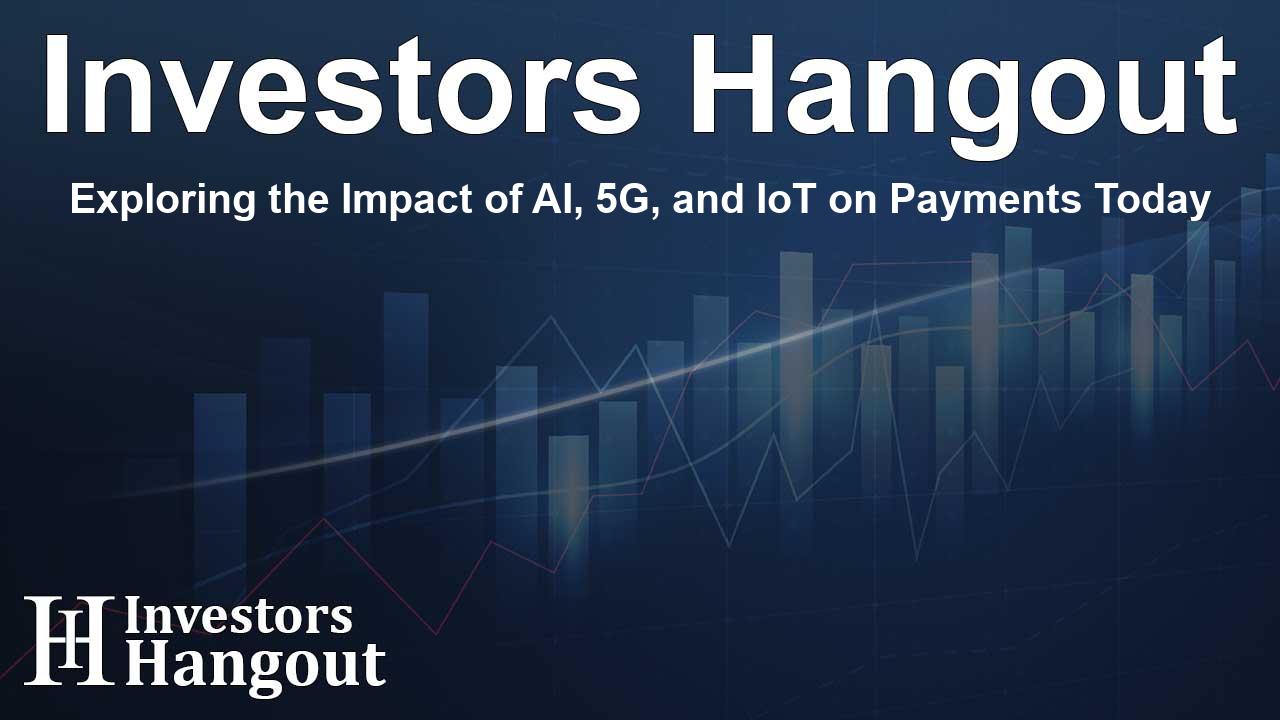Exploring the Impact of AI, 5G, and IoT on Payments Today

Transformative Technologies Shaping Payment Experiences
In an era where technology is at the forefront of commerce, the advances in AI, 5G, and IoT play a pivotal role in redefining how transactions are conducted. The U.S. Payments Forum has recently published a comprehensive white paper titled "Contextual Payments Considering Artificial Intelligence, 5G, and Internet of Things," which delves into this fascinating intersection of tech and commerce.
The Emergence of Contextual Payments
Contextual payments represent a significant shift from traditional payment processes. Rather than requiring consumers to actively engage in a checkout experience, these payments are designed to occur automatically within the context of the user's activities. This innovation leverages previously stored payment credentials and relies on contextual cues and user consent to facilitate transactions. It’s a seamless approach that caters to the fast-paced lifestyles many lead today.
Agentic Commerce: A New Paradigm
One of the key concepts explored in the white paper is the idea of agentic commerce, wherein AI-driven agents take charge of purchasing decisions on behalf of users. These intelligent systems analyze user preferences and behaviors, making informed buying decisions without user input. It’s an exciting development that opens new avenues for consumer convenience.
Unlocking Revenue Potential
Insights from market analysts suggest that agentic commerce could significantly boost global e-commerce conversion rates by as much as 2.5%. This translates to a staggering potential of over $240 billion in additional retail revenue. The implications of this concept could revolutionize how businesses approach sales and customer engagement.
Infrastructure for Contextual Payments
In the white paper, the U.S. Payments Forum discusses how the fusion of AI, 5G, and IoT creates a robust framework for facilitating contextual payments across diverse environments. From retail and transportation to healthcare and smart home technologies, these innovations can support instantaneous payments. For example, imagine an AI-enhanced smart fridge automatically ordering groceries as supplies run low or vehicles seamlessly processing toll payments as they navigate through checkpoints.
Key Considerations in the Evolving Payment Landscape
As these technologies gain traction, several critical factors need attention. Consumer control is paramount; ensuring that users have the ability to manage their payment preferences builds trust in the system. Additionally, regulatory compliance and identity management are essential in safeguarding sensitive information and maintaining consumer confidence.
Addressing Merchant and Consumer Needs
The paper also identifies important considerations for various stakeholders in the payments ecosystem, including merchants, issuers, and processors. Key areas such as interoperability, readiness of infrastructure, and cost implications are crucial for the successful adoption of these technologies.
The Role of Programmable Money
Furthermore, the white paper explores the potential of programmable money, such as stablecoins and smart contracts, to facilitate multi-party contextual transactions. Such advancements promise to streamline payment processes, enhancing the efficiency of the overall transaction landscape.
A Call to Action for Stakeholders
Christina Hulka, executive director of the Secure Technology Alliance, highlighted the need for stakeholders in the payments industry to embrace these transformative changes. By integrating AI, 5G, and IoT, the sector can create faster, safer, and more user-friendly transaction experiences that align with modern living demands.
Join the Movement
The white paper was crafted by the Mobile and Touchless Payments Working Committee, encouraging organizations, associations, and individuals to engage in future projects. Interested parties can find opportunities to collaborate and join the movement towards innovation in payments.
Frequently Asked Questions
What is contextual payment?
Contextual payment refers to a system where transactions occur automatically based on user activity and preferences, eliminating the need for a traditional checkout process.
How can AI enhance payment experiences?
AI can analyze consumer behavior and preferences, allowing for automated purchasing decisions and tailored shopping experiences.
What is agentic commerce?
Agentic commerce involves AI agents making purchases on behalf of consumers, enhancing convenience and efficiency in shopping.
What role does 5G play in payments?
5G provides the high-speed connectivity needed to support real-time transactions and the operation of connected payment devices.
How can stakeholders participate in payment innovations?
Stakeholders can engage by joining organizations like the Secure Technology Alliance and participating in discussions and projects focused on payment technology advancements.
About The Author
Contact Dominic Sanders privately here. Or send an email with ATTN: Dominic Sanders as the subject to contact@investorshangout.com.
About Investors Hangout
Investors Hangout is a leading online stock forum for financial discussion and learning, offering a wide range of free tools and resources. It draws in traders of all levels, who exchange market knowledge, investigate trading tactics, and keep an eye on industry developments in real time. Featuring financial articles, stock message boards, quotes, charts, company profiles, and live news updates. Through cooperative learning and a wealth of informational resources, it helps users from novices creating their first portfolios to experts honing their techniques. Join Investors Hangout today: https://investorshangout.com/
The content of this article is based on factual, publicly available information and does not represent legal, financial, or investment advice. Investors Hangout does not offer financial advice, and the author is not a licensed financial advisor. Consult a qualified advisor before making any financial or investment decisions based on this article. This article should not be considered advice to purchase, sell, or hold any securities or other investments. If any of the material provided here is inaccurate, please contact us for corrections.
